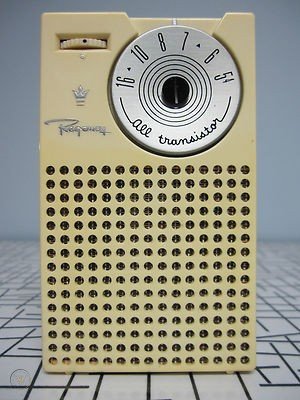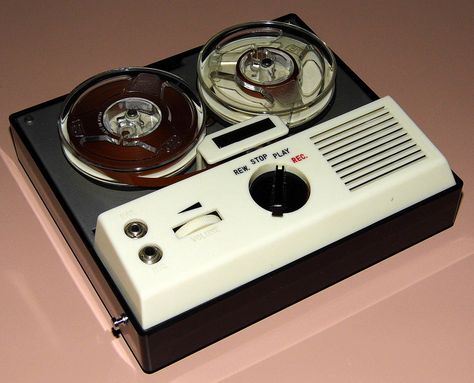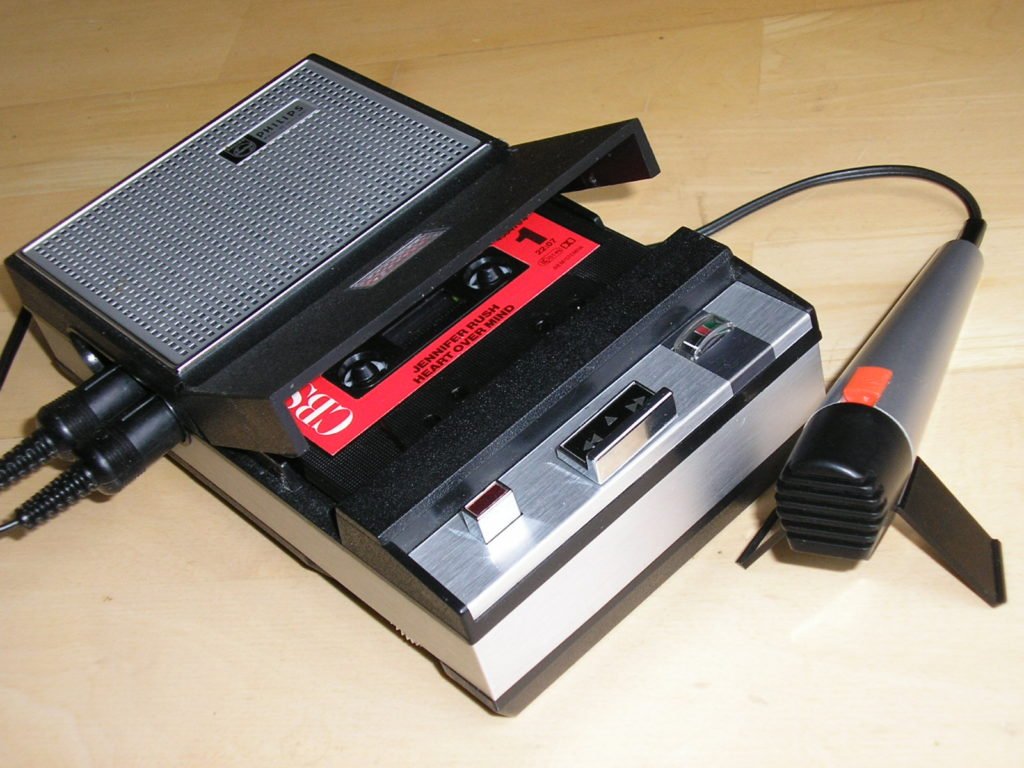News
31 Jul 2020
My Early Days Of Audio – Part 1
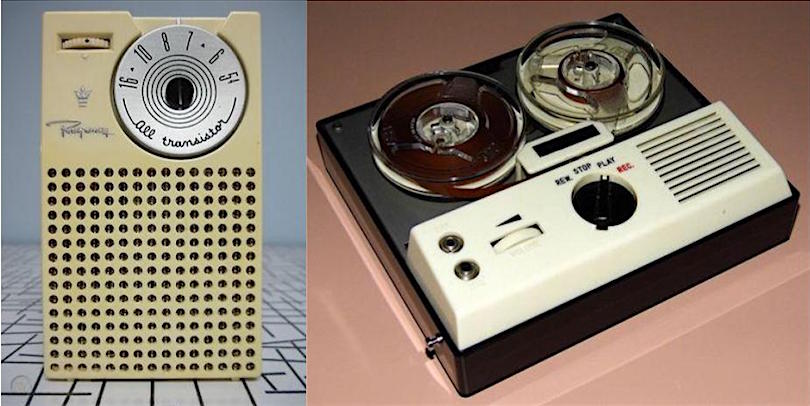
Subscribe to CX E-News
My introduction to recorded music, as far as I can remember, was the family record player when I was kindergarten age. It played 78 rpm 10″ singles and needed a new needle each time you put another record on.
We soon graduated to a more modern one that played 45s and LPs, and so I was forced to listen to my mother singing along with endless albums of show tunes, leaving me with a dislike of the genre that has stuck with me ever since.
But, on my 10th birthday she came back from America (she was a fashion buyer for Marks & Spencer) with one of the first tiny transistor radios, one that would fit in my pocket and had a tiny earphone for solo listening and came with a sturdy little leather case. It was a cream coloured Regency TR-4, one of the very first mass-produced transistor radios. In keeping with the times it was mono, AM only, but who cared – it represented audio freedom, much like the first mp3 players and iPods 30 years later.
This opened up a whole new world of sound, meaning I could listen to all the music on the radio that I liked, which was rapidly diverging from my parents’ tastes. It was a great little unit that people thought was a camera and were amazed when I switched it on and music or the news came out.
Sadly, one day my father borrowed it and took it to work to show his colleagues, one of whom promptly nicked it off his desk and it was never seen again. He never made any effort to replace it either, something that burns inside me even now. Ah, families; can’t live with ’em, can’t shoot ’em!
When my mother came back from another U.S. trip a couple of years later, she brought back another piece of iconic audio equipment for me – a tiny reel-to-reel tape recorder with 3″ reels, built-in small speaker and a little crystal microphone.
A Nagra it wasn’t, but to me it seemed like a complete recording studio! It was about 50mm thick and the size of an A4 piece of paper. I used it and used it until one day it just clogged up and died. I knew nothing about cleaning the heads or the drive mechanism, and I guess it just plumb wore out!
When the family moved to Australia, my parents bought a bigger record player as well as a TV. The small record player from home came with us, and I moved it upstairs to my room, when I started to buy my own records. I used to play them non-stop day in, day out, until my parents weakened and bought me a cheap pair of headphones, getting the local electrical shop to put a headphone socket in the record player so I could plug them in.
In the meantime, my longtime friend LL, who has starred in many of my stories, had been working away on a method of recording the audio from the TV music shows that we used to watch. A self-styled audiophile, he had bought himself a nice Sanyo reel-to-reel tape recorder that took 7-inch reels of tape, which held enough music to keep a party going for hours until the police would arrive to shut it down.
LL’s parents had a big old walnut piece of furniture, which also happened to be a 21″ TV, and it had a thumpy 12-inch speaker mounted in the bottom of it. Rummaging around behind it, he discovered that he could get his fingers on to the speaker terminals and attach an audio lead to them with little alligator clips.
On the other end of this lead he attached a mini-jack cut off from a microphone lead. None of us had the slightest idea of soldering, so we just stripped the wires back and twisted them together, wrapping it up in a gooey lump of insulation tape and plugged it into the Sanyo’s microphone input.
When ‘Hullabaloo’ or ‘Shindig’ came on the TV, we just set the deck to ‘Record’ and sat back.
Perhaps I should point out that a few other things we had no idea about were impedance, gain and line level. The volume that came out almost bent the needles on the Sanyo, but by a trial and error process (a lot of error) of lowering the volume on the TV and using the absolute minimum recording level we managed to get quite an acceptable sound.
LL being a person who knew the value of a dollar, most of his recordings were in mono on four separate tracks – 2 in each direction – to save tape. Economical in theory, but a real tishfight to edit forty years later!
Work beckoned, and I went to Mt Gambier, working at SES 8, the local TV station. I often felt the urge to try my hand at recording some music, but the audio facilities at the station consisted of a single mono Byer tape deck and not much else. My main problem was I had nothing to record onto.
I had a good stereo system courtesy of my 21st birthday, and a Phillips cassette recorder, which although state-of-the-art for its time, was not a particularly flexible recording medium. So one Saturday morning I went down to the town and scoured the local Op shops for tape recorder bargains, coming back home with a compact Sony tape recorder for the princely sum of $25, including half a dozen 7” reels of tape.
The beauty of this particular machine was that it had a big square record button that was two buttons in one. Press the top half and it recorded the Left channel, press the bottom and it recorded the Right channel. Press both together and it recorded Left and Right channels at the same time. This opened up a world of opportunity for very basic multi-track recording and track bouncing.
Les Paul would have been proud of me.
So, I could record a guitar track, say, on the Left channel, then play it back while I recorded another guitar track on the Right channel. Then I could playback both tracks while I put the microphone from the cassette deck next to the speaker, where it would pick up the two backing tracks and record my golden tonsils vocal and blues harp solo at the same time. I could then copy that track to the Left channel of the tape deck and start the process all over again.
At some point the level of hiss would overtake the level of the music, but up to that point it was quite listenable. No Tubular Bells, that’s for sure, but a lot of fun.
My main problem was I didn’t have any drums. My guitar was the semi-legendary EastDoncaster, the cheap Telecaster copy I had bought after my 1964 Rickenbacker 12-string had been stolen, but I had no percussion instruments to create the beat. Still, when the going gets tough, the tough get drumming.
In my spare time I did a fair amount of experimentation on home-made drums, and I worked out that there were three different ways of getting a drum sound (apart from the obvious method of using a drum, of course).
A good quality cardboard box makes a flexible approximation of most drums, from kick to snare depending on where you hit it.
Smacking your hands on the back of an acoustic guitar covered with a couple of layers of tissue paper can make a surprisingly realistic snare drum, and finally rolling up my T-shirt and slapping my guts with my hands.
Naturally I chose door number three, since I already carried the necessary equipment with me at all times. When inspiration struck, my DynaSonic Gut™ was ready and waiting!
Next Month: Audio life continues with a guest appearance from V 1, my first ex-wife. Stay tuned!
CX Magazine – July 2020
LIGHTING | AUDIO | VIDEO | STAGING | INTEGRATION
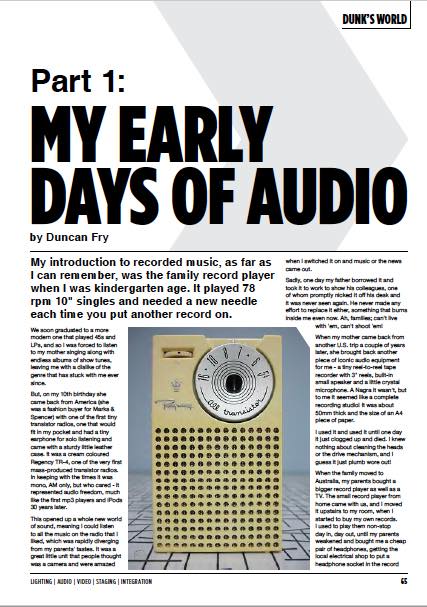
Entertainment technology news and issues for Australia and New Zealand
– in print and free online www.cxnetwork.com.au
© VCS Creative Publishing
Subscribe
Published monthly since 1991, our famous AV industry magazine is free for download or pay for print. Subscribers also receive CX News, our free weekly email with the latest industry news and jobs.

